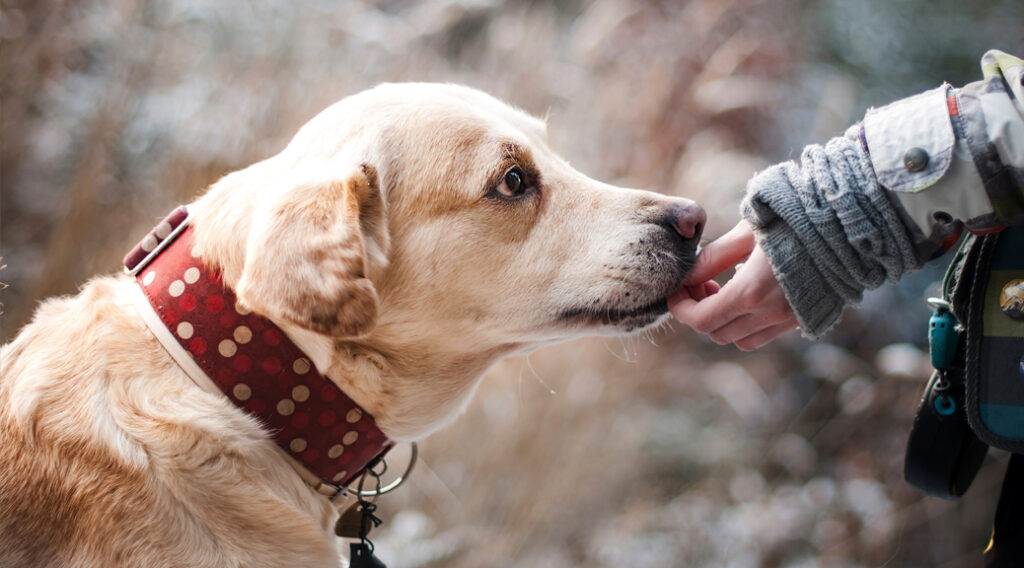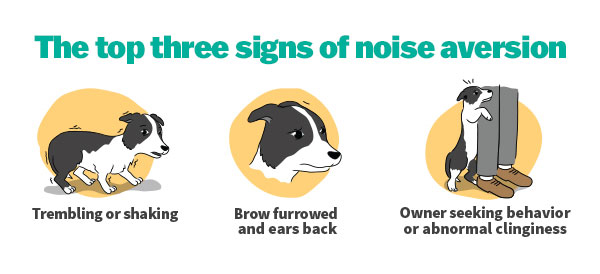Separation anxiety—manifesting as a pet’s exhibiting extreme stress from the time the owner leaves them home alone until they return—is among the most distressing conditions companion animals and their owners can experience.
It’s extremely stressful for the anxious dogs and cats and can have a substantial impact on their owners’ daily lives, often causing near-constant anxiety and requiring time-consuming clean-ups and costly repairs. Over time, some owners grow reluctant to leave home for dread of the mess and destruction that may await them upon returning.
In severe cases, if left untreated, separation anxiety can result in injury to the pet, damage to furniture, fixtures and the house itself, complaints from neighbors and, ultimately, the owner’s painful decision to surrender the pet to a shelter or even have it euthanized.
Fortunately, there are proven, research-based approaches our veterinarians can take to diagnose your pet’s separation anxiety and then work with you to formulate and carry out a treatment plan tailored to your pet’s individual symptoms, temperament and needs. With early and effective intervention, the prognosis in most cases can be quite good.
Understanding Separation Anxiety
Signs and symptoms of separation anxiety include:
- Pacing and restlessness
- Following the owner excessively
- Salivating excessively
- Shaking excessively
- Loss of appetite
- Vomiting
- Destructive chewing
- Barking, whining and howling
- Urinating and defecating indoors
- Digging and scratching at doors or windows in an attempt to escape and reunite with the owner
- Excessive excitement when greeting the owner upon return
- Self-harm
While we don’t know precisely why some pets develop separation anxiety and others don’t, we do know these are possible causes:
- An extreme attachment to or dependency on the owner
- A traumatic event
- A change in routine
- A major life change, like a move to a new home, a new baby, the death of a family member or other pet, or abandonment to a shelter
What You Can Do
If you suspect your pet is suffering from separation anxiety, a good first step is to learn more about the condition. To get you started, we’ve selected and linked to several authoritative online resources that will explain the condition in varying degrees of detail and help you do a better job of observing and reporting your pet’s behavior to us to facilitate diagnosis and treatment.
We recommend you begin with an excellent article titled “Separation Anxiety in Pets: Your Questions Answered” on the University of Illinois Urbana-Champaign’s College of Veterinary Medicine website. The article covers both dogs and cats and features Dr. Loukia Agapis, director of the vet school’s Shelter Medicine Program, answering your most likely questions in an easily understandable way.
While published primarily for veterinary professionals more than a decade ago, an article in Today’s Veterinary Practice titled “Canine Separation Anxiety” offers more detailed explanations and advice that will provide you with a preview of how our doctors and technicians will approach diagnosing and treating your dog’s symptoms of separation anxiety.
Also specific to dogs, the American Kennel Club’s article, “Separation Anxiety in Dogs: Causes, Prevention, and How to Solve It” begins by defining separation anxiety and explaining the difference between separation anxiety and normal canine behavior.
The AKC article continues with specific training and behavior modification techniques you can use to begin helping your dog overcome its anxiety, along with a brief overview of drugs we may prescribe if needed. The article concludes with assurances of a high success rate for appropriate treatment.
The ASPCA® (American Society for the Prevention of Cruelty to Animals®) website has a detailed article, titled simply “Separation Anxiety,” that covers the topic in detail.
We especially like the sections on medical and behavior problems for us to rule out before arriving at a separation anxiety diagnosis. We also find the distinction between treating mild cases and moderate to severe cases to be most helpful.
The ASPCA® article concludes with step-by-step training advice and suggestions for augmenting the training with multiple common-sense strategies to relieve your pet’s anxiety.
From PetMD, especially for our clients whose pets present more severe or advanced cases requiring a referral to a veterinary behaviorist, we recommend “How to Help a Dog With Separation Anxiety.” There’s also a useful section on medications that may be appropriate in some cases.
The article concludes, “Separation anxiety isn’t something that can be cured— there’s no quick fix or one-size-fits-all medication—but it can be successfully managed with patience and training.”
Finally, for those of you particularly interested in the hard science behind diagnosing and managing separation anxiety in dogs, we refer you to “Canine separation anxiety: strategies for treatment and management” from the National Institutes of Health veterinary medical research library. Although the publication date is October 30, 2014, the heavily annotated research remains sound, and author Rebecca J. Sargisson presents her findings in an easy-to-understand way. She describes her paper in the following Abstract:
Dogs with separation-related behavior problems engage in unwanted behavior such as destruction of property and excessive vocalization when left alone, causing distress for both the dog and the owner, and often leading to the dog being relinquished or euthanized. I review research on factors likely to predispose dogs to developing separation anxiety and on the treatments available. Although research is equivocal, dogs seem to develop separation-related behavior problems if they are male, sourced from shelters or found, and separated from the litter before they are 60 days old. Protective factors include ensuring a wide range of experiences outside the home and with other people, between the ages of 5–10 months, stable household routines and absences from the dog, and the avoidance of punishment. The most successful treatment for canine separation-related problems may be behavior modification that focuses on systematic desensitization and counterconditioning, which can be supplemented with medication in the initial stages. Where individual therapy from an animal behavior expert is not possible, advice to dog owners should be clear, simple, and contain five or fewer instructions to improve adherence. Advice is given for people seeking to adopt a dog, for new dog owners, and for existing dog owners who wish to treat their dog’s separation anxiety.
To explore the topics introduced in the Abstract, read the complete paper on the NIH website.
Getting One-On-One Professional Help
Once you’ve conducted as much research as you feel inclined to do, the critically important next step in addressing your pet’s suspected separation anxiety is to schedule an appointment with us for a medical exam and diagnosis to rule out possible underlying medical conditions and determine the best way forward toward the most effective treatment.
Regardless of the particulars of your pet’s individual case, our veterinarians agree the right course of action will almost certainly involve a customized program of systematic desensitization and, if necessary, medication.
What we will never recommend:
- Ignoring the pet
- Punishing the pet
- Leaving the pet to “cry it out”
These negative approaches are cruel and can damage your pet’s mental health. Besides, they don’t help solve the separation anxiety problem.
Are YOU The One Who’s Anxious?
We usually think of separation anxiety in connection with pets as experienced exclusively by pets separated from their owners. But a limited amount of research and lots of anecdotal evidence show owners can be the ones feeling anxious when separated from their pets.
Maybe you know pet-owner-experienced separation anxiety from first-hand experience.
In a June 2022 article in Psychology Today, author Hal Herzog PhD writes, “Separation anxiety has been extensively studied in pets, but few studies have examined separation anxiety in their owners.”
Herzog is a psychology professor whose research interests include the impact of pets on human health and well-being, attitudes towards the use of animals and the evolution of pet-keeping. He notes that separation anxiety disorder in humans was officially recognized by the American Psychiatric Association in 2015. For both children and adults, the condition is characterized by “unusually strong fear or anxiety to separating from people they feel a strong attachment to.”
The limited research Herzog cites in the article indicates pet owners can experience similar anxiety when separated from their animal companions.
In answer to a 2022 YouGov survey question, “Do you feel anxious leaving your pets at home alone all day?” 40% of a representative sample of American pet owners said “yes.”
Researchers in Australia used four standardized psychological scales measuring human-directed separation anxiety, pet-directed separation anxiety, attachment to their pets and perceived social support to explore pet-owner separation anxiety.
Among the general trends they found:
- People who are prone to human-directed separation anxiety are more likely to experience separation anxiety directed at their pets.
- Owners who are especially attached to their pets are more likely to experience pet-separation anxiety.
- People who have less social support from friends and family are more likely to feel anxiety when separated from their pets.
- Dog owners are more prone to pet separation anxiety than cat owners.
- Pet owners who do not have children at home are more likely to experience pet-related separation anxiety.
In another study, anthrozoologists at Washington State University studied pet-related separation anxiety among college freshmen who’d left family pets behind at home.
The results:
- 75% of the 145 students who participated in the study reported experiencing at least mild pet-separation anxiety.
- 22% indicated moderate anxiety.
- 3% said their anxiety was severe.
Like pet owners studied by the Australian researchers, the college-student participants who were most attached to their pets were more likely to experience anxiety related to separation from them. Herzog notes, “the students who were highly involved in their pets’ lives—the ones who frequently petted and talked to their pets and let their pets sleep in their beds—tended to have high pet-separation anxiety scores.”
He concludes, “These studies suggest that pet separation anxiety is an important aspect of the human-animal bond that has been neglected by researchers. And I suspect it is surprisingly common.”














